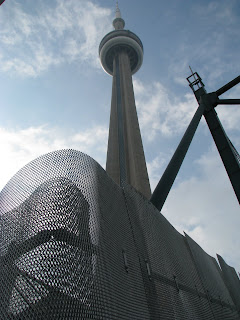Fortress Toronto, for the last two weeks a symbol of big government and police power, slowly faded into history on Monday (June 28, 2010), a day after presidents and prime ministers of rich and poor nations under the umbrella of the Group of 20 (G-20) ended three days of talks in Canada's largest city.
The so-called fortress -- a collection of main roads and alleys around the Metro Toronto Convention Centre, site of the G-20 Summit, walled in by concrete barriers and steel fences stretching two kilometers and guarded round the clock by fully-armed police -- was being dismantled starting early Monday.
Office workers and pedestrians took back most of the sidewalks within the zone while motorists jammed the streets during the early morning rush hours.
Offices, commercial establishments and restaurants opened again after a weekend of holiday forced by the security requirements of the summit.
On Saturday (June 26, 2010), the biggest protest of the summit erupted into violence outside the security zone.
At least 500 had been arrested and by Monday, news reports said a significant number had been released from a temporary detention facility in downtown.
The government of Canada spent a whopping $1.2 billion to host the two meetings -- the Group of 8 (G-8) in Huntsville, a resort town north of Toronto; and the G-20 in downtown Toronto.
Office workers, tourists and pedestrians filled the sidewalk leading to what had been the "core" of the security zone where the G-20 Summit took place during the last three days ending Sunday.
After an exhausting week of securing the zone, these three police officers walked back to their cars and onto their regular routine.
Roadblocks are sidelined to give way to human and vehicle traffic. (All photos by Romy Marquez) C2010







Your photos are stories!
ReplyDelete